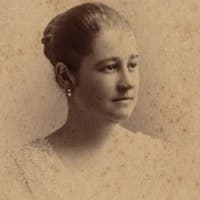Crocker History

From a family art gallery to a modern museum, the Crocker has always been a gathering space for community.
The Museum
Our history started with the activities of the Sacramento philanthropists Edwin Bryant Crocker and his wife Margaret in the mid 1800s. Their interest in art led to a European trip in 1869–1871, where they collected 701 paintings and 1,344 Master Drawings to display in their art gallery, which was part of a complex renovation and addition to an existing house at 3rd and O streets. They also commissioned a large number of paintings from artists working in California.
Although this was a private collection—the largest in the United States at the time—the Crockers enriched their growing community by providing citizens with opportunities to view the works of art that they had acquired. The Art Gallery, as it was then known, came to be prized by Sacramentans, and in response, Margaret Crocker generously donated the gallery building and its collection to the City of Sacramento in 1885, forming the first public art museum west of the Mississippi.
Today, the Museum consists of the historic house and gallery structures, as well as the contemporary Teel Family Pavilion, which more than tripled the Museum's size in 2010.

The Crockers
Judge Edwin B. Crocker (1818–1875) and his wife Margaret Rhodes Crocker (1822–1901) moved to Sacramento from New York in 1852, where they championed abolitionism and supported numerous charitable causes. They raised seven children together, including the infamously colorful Amy Crocker (author of the autobiography And I’d Do It Again) and Jennie Crocker Fassett, who would follow in her mother’s charitable footsteps by contributing $10,000 towards the City of Sacramento’s purchase of the former Crocker family home in 1911.
After Judge Crocker suffered a stroke in 1869, the family embarked on a Grand Tour of Europe where they collected numerous works that would later become the foundation for the Museum’s collection, including a significant selection of European Master Drawings. Following her husband's death in 1875, Margaret presented the "Crocker Art Gallery" and the bulk of its collections to the City of Sacramento and the newly formed California Museum Association in May 1885.

Judge Edwin B. Crocker
1818–1875

Margaret Eleanor Rhodes Crocker
1822–1901

Mary Norton Crocker Walker
1846–1923

Kate Eugenie Crocker Gunn
1854–1874

Nellie Margaret Crocker
1857–1879

Jennie Louise Crocker Fassett
1860–1939

Amy Isabella Crocker Galitzine
1864–1941
The Architecture

In 1868, Judge Edwin B. Crocker purchased the property and existing buildings on the corner of 3rd and O Streets. He then commissioned local architect Seth Babson (1830–1908) to renovate the home into a grander, Italianate mansion. In addition, Crocker asked Babson to design an elaborate gallery building adjacent to the mansion to display the family's growing art collection.
Babson envisioned the home and gallery as an integrated complex, unique in design and built from the finest materials. The gallery building included a bowling alley, skating rink, and billiards room on the ground floor; a natural history museum and a library on the first floor; and gallery space on the second floor. Completed in 1872, the Crocker family mansion and art gallery are considered the masterpieces of Babson's career. The family mansion went through several uses and reconstructions until a 1989 renovation restored the historic façade and created a modern gallery interior. The original buildings, now connected, as well as the since-demolished Herold Wing addition of 1969, were renamed the Crocker Art Museum in 1978. The gallery building is a California Historical Landmark and listed in the National Register of Historic Places.

In 2000, the Crocker appointed a selection committee comprised of elected officials, community leaders, CAMA board members, city staff, and potential donors to search for an architect who would lead the Museum through master planning. After a comprehensive review of the world's major museum architects, Gwathmey Siegel & Associates Architects (GSAA) was chosen to guide the process because of their design aesthetic and past experience. GSAA designed the expansion of the Crocker after conducting a thorough master planning process. Many voices from the community were involved in a collaborative process to ensure that the new building and the internal reconfiguration of the existing structures would work together as a whole. On October 10, 2010, the Crocker opened the 125,000-square-foot Teel Family Pavilion.
The expansion more than tripled the Museum's size, enhancing its ability to serve Sacramento and the region's many visitors. For the first time in the Museum's history, there were dedicated gallery spaces for all collecting areas. The expansion also enabled the dedication of the historic building's entire first floor as the Museum's Education Center, including four studios, space for student and community exhibitions, an expanded Gerald Hansen Library, the Art Education Resource Room, and Tot Land.
The Crocker Through the Ages



